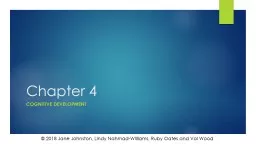

Figure 41 The brain Source NatthapongSachan Shutterstockcom Figure 42 Planning for the study of childrens cognition NOW YOU CAN BEGIN Have you checked everything How would this knowledge improve your work with children ID: 796758
Download The PPT/PDF document "Chapter 4 Cognitive development" is the property of its rightful owner. Permission is granted to download and print the materials on this web site for personal, non-commercial use only, and to display it on your personal computer provided you do not modify the materials and that you retain all copyright notices contained in the materials. By downloading content from our website, you accept the terms of this agreement.
Slide1
Chapter 4
Cognitive development
Slide2Figure 4.1
The brain
Source: NatthapongSachan/ Shutterstock.com
Slide3Figure 4.2
Planning for the study of children’s cognition
NOW YOU CAN BEGIN
Have you checked everything?
How would this knowledge improve your work with children?
How would you ensure the validity of your data and analysis?
How will you maintain confidentiality?
How ethical is your research idea?
How could you collect data on this area of cognition? What techniques will you use (observation, questioning, interaction, test, task)?
What has already been found out in this area?
What do you know about this aspect of cognition?
Why do you want to research this area?
What do you want to find out about children’s cognition?
START HERE
Slide4Figure 4.3
Which hemisphere dominates?
1.
I always wear a watch.
2. I keep a diary/
filofax
/electronic
organiser.3. I believe there is a right and wrong way to do everything.4. I hate following directions.5. The expression ‘Life is just a bowl of cherries’ makes no sense to me.6. I find that sticking to a schedule is boring.7. I'd rather draw someone a map than tell them how to get somewhere.8. If I lost something, I'd try to remember where I saw it last.9. If I don't know which way to turn, I let my emotions guide me.10. I'm pretty good at maths.11. If I had to assemble something, I’d read the directions first.12. I'm always late getting places.13. Some people think I’m intuitive.14. Setting goals for myself helps keep me working. When somebody asks me a question, I turn my head to the left. If I have a tough decision to make, I write down the pros and the cons.17. I'd make a good police detective.18. I am musically inclined.19. If I have a problem, I try to work it out by relating it to one I've had in the past.20. When I talk, I gesture a lot.21. If someone asks me a question, I turn my head to the right.22. I believe there are two sides to every story.23. I can tell if someone is guilty just by looking at them.24. I keep a ‘to do’ list.25. I feel comfortable expressing myself with words.26. Before I take a stand on an issue, I get all the facts.27. I’ve considered becoming a poet, a politician, an architect or a dancer.28. I lose track of time easily.29. If I forgot someone's name, I’d go through the alphabet until I remembered it.30. I like to draw.31. When I’m confused, I usually go with my instincts.32. I have considered becoming a lawyer, journalist or doctor.
Left brain – 1, 2, 3, 5, 8, 10, 11, 14, 15, 16, 17, 19, 24, 26, 29, 32
Right brain – 4, 6, 7, 9, 12, 13, 18, 20, 21, 22, 23, 25, 27, 28, 30, 31
Slide5Figure 4.4
Piaget’s model of cognition
Source: Adapted from Davenport, 1994: 132
Slide6Figure 4.5
Children’s responses to ‘Is it an animal?’
Source: Bell and Freyberg, 1985: 31
INSERT REDRAWN FIGURE 4.5
Slide7Figure 4.6
A model for a constructivist teaching sequence
Source: Adapted from Scott, 1987: 9